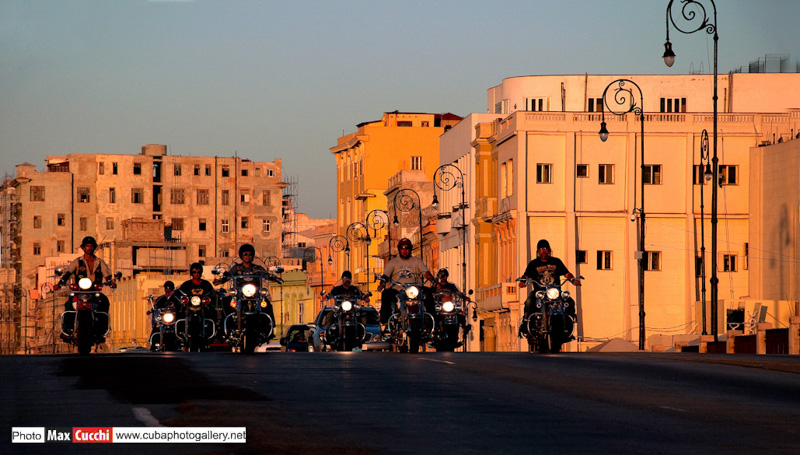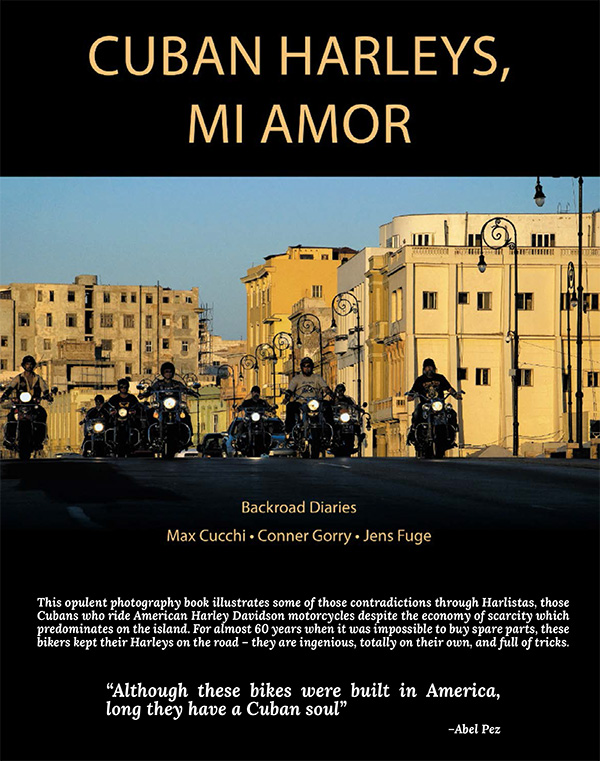Cuba's digital destination
Harley-Davidson in Cuba: Then, Now, Forever

by Conner Gorry
photos courtesy of Max Cucchi
New love, the birth of a child, a hard-fought goal reached: There are experiences in life that awaken dormant memories and drive the desire to make new ones. Such rarified moments are nothing short of harmonic convergence, when nostalgia, hope, and history meld into possibility.
Anyone who has walked Havana Vieja’s cobblestone streets or snaked around La Farola, Cuba’s most famous road, has born witness to this convergence. The same can be said for anyone who has pulled out of a hill-hugging curve and thundered down the open road on a Harley-Davidson. The freedom and power are extrasensory – a liberation of mind and spirit provided by precision mechanics and timeless design.
Where Cuba and Harleys come together is more than harmonic convergence – it’s unparalleled alchemy.
Like many game-changing innovations, the first Harley-Davidson prototype was built at home – by Arthur Davidson and brothers Walter and William S. Harley in 1903. Within four years, they founded the Harley-Davidson Motor Company, a name which has come to symbolize American spirit and ingenuity. Links between the United States and Cuba in the early 20th century were among the strongest and most fluid in the two countries complex history. Not surprisingly, within a decade of the companys founding, Harley-Davidsons could be seen cruising the Cuban streets.
Harley history in Cuba has been lived and written by many people the length and breadth of the island, with the largest concentration of the so-called Harlistas in Havana, Matanzas and Santa Clara.
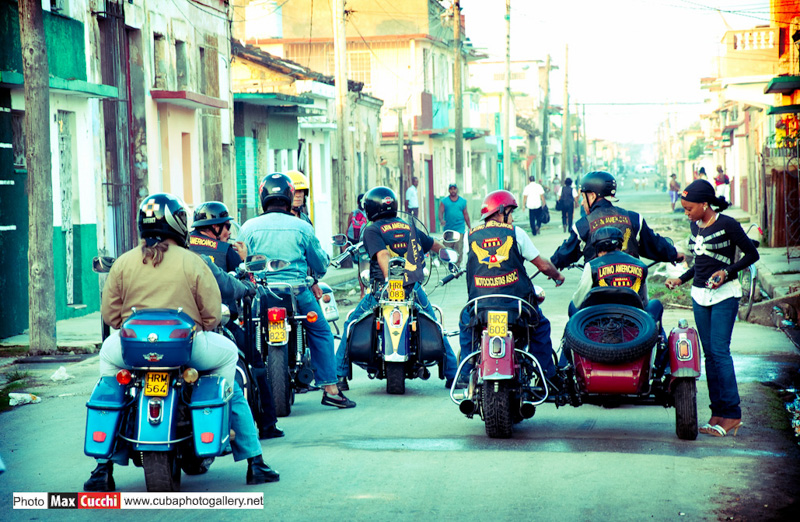
From 1917 on the first Harley-motorcycles and parts went on sale at the historic Harris Brothers store in Havana Vieja as well by Pujol Soler in Santiago de Cuba. Unfortunately, the bike business wasn’t kind to both of the dealers, who sold their franchise to the Bretos’, a family of motorcycle dealers from Santiago de Cuba; legends were poised to be born, history was in the making.
The name Bretos, and in particular that of patriarch José Luis Bretos, himself a Harley-rider, has become synonymous with Harley-Davidson in Cuba. The family dealership, located at San Lázaro #314, became the islands hub for Harley-culture and almost all the antique bikes rode in Cuba today originated from this showroom. According to dealership records, Bretos, the sole distributor on the island, sold some 500 Harleys in the 1940s and 50s alone. What’s more, a few veteran riders still kicking around were friends and clients of the Bretos’.
A savvy businessman with considerable resources, Bretos struck a sweet deal with the police and armed forces to supply them with motorcycles – a sales strategy also implemented in the United States at the time. As a result, the Harley-star was ascending fast, on both sides of the Straits. Bretos combined popular promotional events including cross-country rallies and races, with aggressive marketing of new models rolling out of the HD factory in Wisconsin like the FL Hydra Glide with Panhead motor, to lucrative effect.
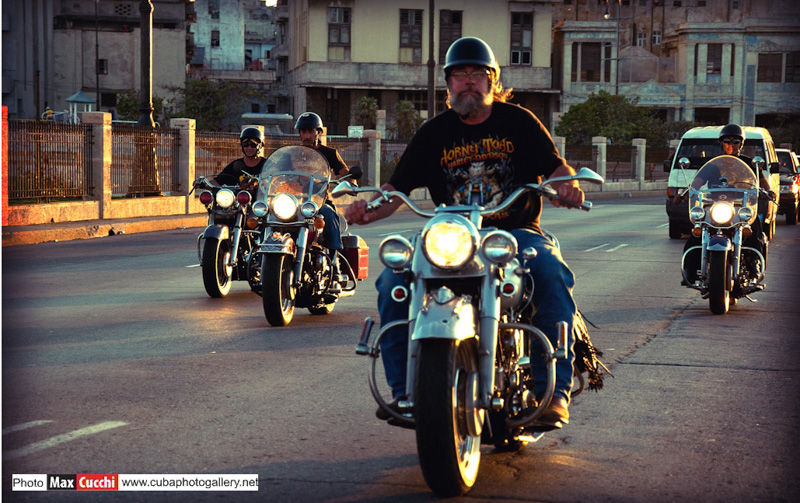
This was considered the Harley-hey day, when Cubans with the means upgraded to faster, more comfortable bikes – like the ones featuring the spring-action Buddy Seat – as soon as they became available. Silvio Jesús del Fresno of Matanzas remembers his father, Benigno González, who got his first bike (a Baby Harley) at age 18, buying a new Harley almost every year from José Luis Bretos. Matanzas was a Harley-hot spot throughout the 1940s and 50s, when aficionados like González, Victor Ashman, Cheíto Puig and other young Matanceros would go on regular rallies and road trips, sometimes even traveling to the United States to convene with their northern brethren. “My father rode his Harley the length and breadth of Cuba”, says Silvio. “I’ll never forget the day a friend brought a Harley to the house and put it in front of him after he was too old to ride. I watched the tears stream down his face. It was very moving.”
By the 1950s, Harleys were all the rage in Cuba, largely thanks to Bretos, his team of talented mechanics, and the feats of the Team Acrobática – a daredevil group of police officers who criss-crossed the island performing death-defying tricks on their hogs. Historians estimate there were over 150 Harleys in Havana alone at this time. Fleets of Baby Harley-Super 10s and Hydra Glides could be seen plying the streets delivering goods and groceries to customers or dropping off the latest Hollywood movie reels at local cinemas.
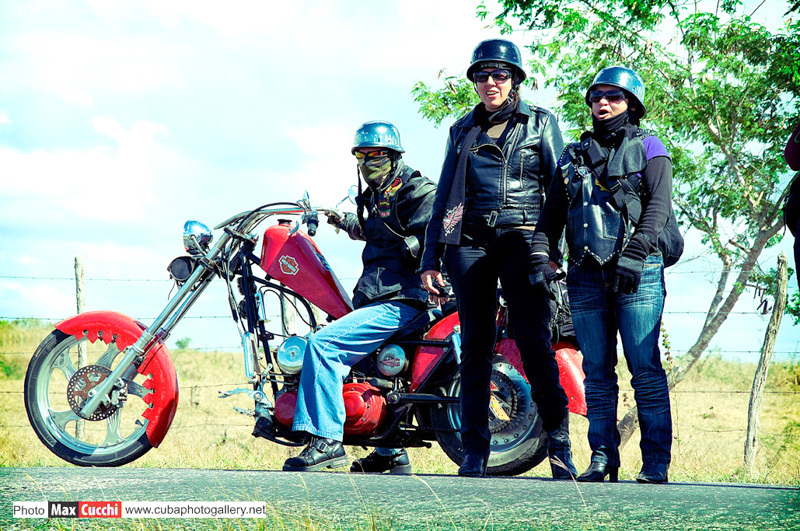
New riders meanwhile, favored the GE Servi-Car for its smoother, quieter ride provided by innovative two-cylinder Mellow Tone technology. In 1951, Harley-Davidson manufactured 6 000 of its 74FL models. Harley-riders the world over – including in Cuba – bought these moderately-priced motorcycles in droves. Luis Bretos capitalized on HD’s popularity, further honing his successful marketing strategy and improving the efficient delivery of his bikes to customers across the island. He organized rallies from Pinar del Río to Holguín and Harleys were popular features of Havanas annual Carnival parades. But the party was about to come to a crashing halt …
When the Revolution triumphed in 1959 and the USA imposed an economic blockade, Cuba’s Harley-dealership closed. Parts and resources for maintaining the bikes dried up and Harlistas across the island suffered. So began a new era for Cuban Harley-riders, who harbored the same passion for their bikes, despite the new conditions.
The Cuban Government reacted in its very own way and dispersed all Harleys from the streets which had been operated by the Police by then. It may be the most sad chapter in Cuban Harley-history when a hole was dug right in middle of the baseball field of the Boniato prison near Santiago in which all the completely operable bikes were pushed by a bulldozer. The vintage bikes still rest there under a cover of concrete. The old Harlistas are sure that this sacrilege would not have happened if at that time the popular revolutionary leader Camillo Cienfuegos would still have been alive. The Comandante who shortly before that had had an accident is said to have purchased the last new Harley in Cuba and used to be himself an enthusiastic biker.
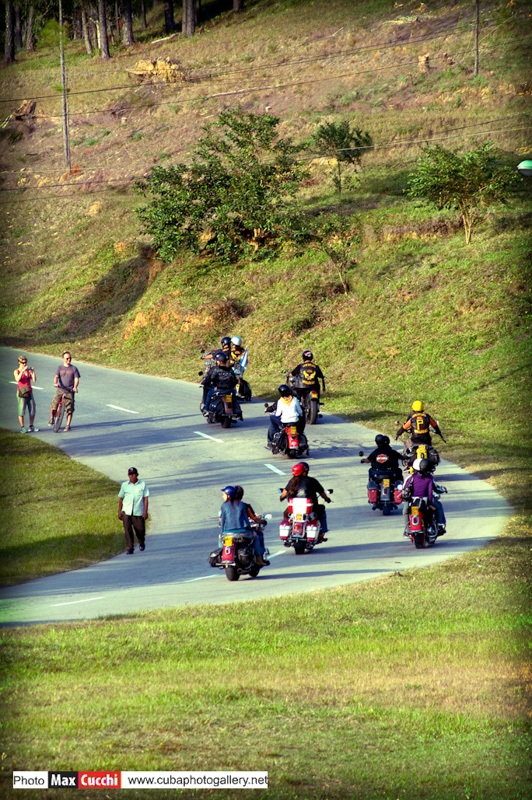
Harlistas on the island overcame the lack of parts and kept their bikes on the road by adapting and inventing. But not all were willing or able and many traded in their Harleys for other, inferior bikes that were easier to maintain. These were sad, distressing times and you’ll still hear people say “I had a Harley, but exchanged it for a Vejovina” – a heart-wrenching phrase for any Harlista within earshot.
A culture of invention and innovation grew among a cadre of cunning mechanics – many of whom you’ll read about in these pages, including the legendary José Lorenzo (Pepe Milésima) – who adapted parts from other cars and motorcycles and fashioned tools from scratch. This mechanical brilliance and creativity is still exhibited every day in garages and workshops across Cuba and is why close to 100 Harleys from before 1960, including the two oldest – from 1936 and 1937 – still cruise the Cuban streets. The camaraderie forged by the difficulties of Harley-ownership on the island, combined with riders’ dedication to the brand, have created the vibrant family of Harlistas Cubanos in existence today.
A veritable renaissance of Harley-culture is underway in Cuba, coalescing around clubs like the at the time being ten local chapters of the Latin American Motorcycle Association (LAMA) and annual events including the Varadero Harley-Rally. Likewise, the Day of the Fallen Biker, a Fathers Day tradition where Cuban bikers caravan from the Malecón to the Colón Cemetery in Havana to pay tribute to bygone bikers and lay flowers at the tomb of Pepe Milésima, is a popular annual event.
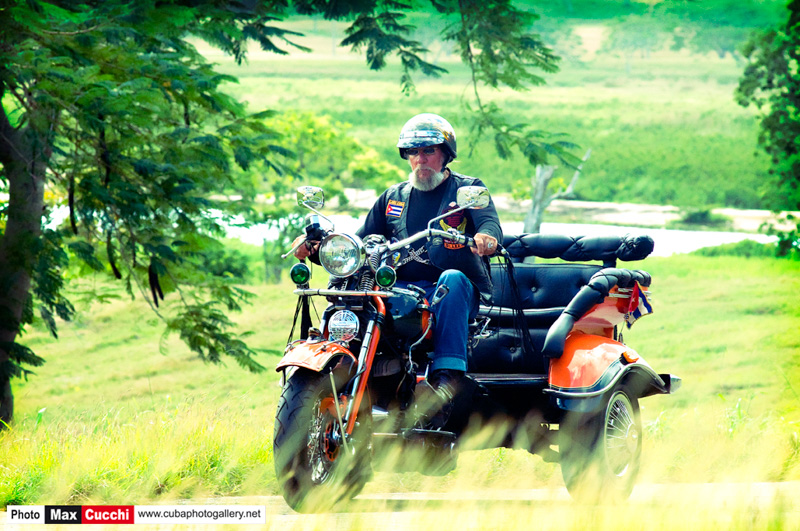
Journalists started taking an interest and writing articles about Cuban Harley-culture. Little by little, motorcycle magazines and manuals started trickling in, augmenting Cuban Harlistas’ mechanical knowledge and informing them about biker culture elsewhere. Some international support began arriving as other Harlistas around the world learned of their Cuban brethren; though small, it was symbolic and provided hope.
In 2006, MC-Travel (Denmark) arrived in Cuba with riders and their bikes – the first Harleys to arrive in Cuba since 1962. This was a huge leap forward, not only for the cultural exchanges between foreigners and Cubans it provided, but also the channels it opened for Cuban Harlistas to obtain parts and technology. Similarly, the movie “Cuban Harlistas” introduced audiences around the world to Harley-culture on the island; more aid began arriving, like the Metzeler tires from Italy brought by MC-Travel. Then “HD Around the World” appeared, spreading the word and passion of Cuban Harlistas even further. As a result of all this exposure, Harley-Davidson rentals became available in Cuba in 2011 and many bikers from far and wide have visited Cuba in cultural exchanges.
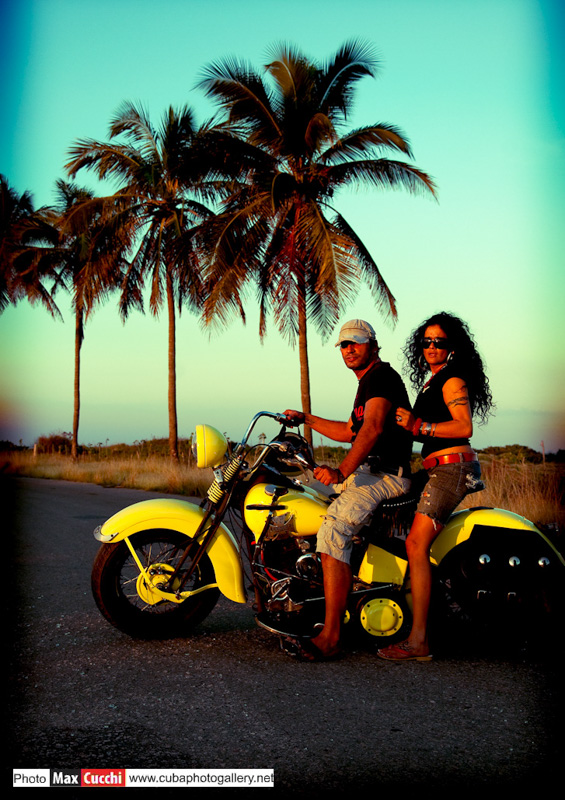
The next era of Harley-Davidson in Cuba began in 2004: Ever since then some Harlistas and other Riders meet once a year in Varadero in order to party together. 2012 this was professionalized and the First International Harley-Rally (Havana – Varadero) had a great press feedback.
No matter what comes next for Cuban Harlistas, they are now known and respected worldwide for their steadfast dedication to restoring and preserving their Harleys and to preserve the spirit that unites them.
Like Cuba itself, there’s something undeniably unique and alluring about a Harley-Davidson. Says Cheíto Puig, at 104, the islands oldest surviving Harlista: “There are a lot of motorcycles in the world. But none are as well constructed, sexy, or desirable as a Harley-Davidson.” We couldn’t agree more.
